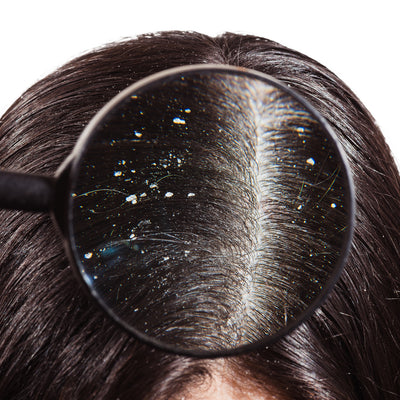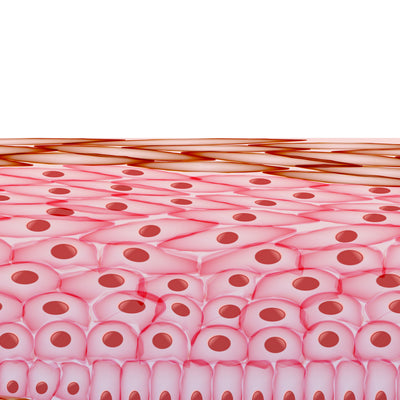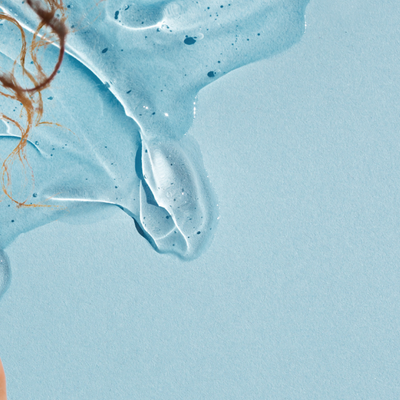
The Ultimate Guide to Deep Conditioning Natural Hair Part 2: The How
The Ultimate Guide to Deep Conditioning Natural Hair Part 2: The How
Susan Walker| April 18, 2015

So how do you deep condition? And how do you know if your deep conditioner is good or not? Do you rely on price? Not necessarily as an expensive product doesn’t mean the product is good, nor does a cheap product mean it doesn’t work. So what should you look for? The answer to this question is to become ingredient savvy. Having an understanding of ingredients will help you determine, at least at first glance, if a deep conditioner is going to be effective for you or not.
Ingredients that attach onto to the hair
Remember we discussed the fact that conditioning agents ADSORB to the hair? ADSORBING means that the ingredients attach to the surface of the hair. This phenomenon is responsible for helping to soften the hair, temporarily repair the hair, smooth the cuticle and reduce flyaways. The main types of ingredients you’re looking for are cationic surfactants, cationic polymers, emollients, oils and silicones.
Surfactants are molecules that have water-loving and water-repelling segments. There are many uses for surfactants and they are mainly used for their cleansing ability. Surfactants can carry a positive charge, negative charge or no charge. However, when it comes to conditioning, cationic surfactants – or those with a positive charge – are extremely important. Since hair carries a relative negative charge, if you use a cationic or positively charged surfactant it will be attracted to the negatively charged section of the hair and bind to the surface of the hair. The surfactants will also form a film that smoothes the cuticle resulting in reducing static, tangling and improving softness. What are some main cationic surfactants? Behentrimonium methosulfate, behentrimonium chloride and cetrimonium chloride. Other ingredients that adsorb are conditioning polymers like the polyquaterniums and cationic guar gum. Lastly emollients such as cetyl and cetearyl alcohol, some oils and silicones also have the ability to attach to the hair and convey benefits.
Ingredients that penetrate into the hair
Some ingredients can penetrate into natural hair at a temperature of about 35 degrees celcius. This corresponds to the temperature that would be reached if you applied conditioner to your hair and covered it with a shower cap. These ingredients include hydrolyzed wheat protein, hydrolyzed silk protein, coconut oil, cetrimonium bromide, panthenol, some silicones. Many can penetrate in between the layers of the cuticle and into the cortex of the hair. Each ingredient has its own time for penetration ranging from minutes to hours. This time can also depend on the condition of the hair often with damaged hair resulting in faster penetration than hair that is not damaged. So what about the DIY mayonnaise, avocado and egg masks so many women use? Well the truth is that a lot of those ingredients aren’t penetrating INTO the hair. Especially not the egg. In order for protein to penetrate into the hair is has to be hydrolyzed into amino acids. Egg protein is just too large to have any affect inside the hair. The most you’re hoping for with these DIY masks is for the ingredients to sit ON TOP of the hair and make your hair feel good temporarily.
So what are the best steps to deep condition curly hair?
- Shampoo with a product containing negative surfactants or cleansers. Rinse the shampoo from the hair and then apply the conditioner with positive surfactants. This is the best method for getting the most amount of conditioner to adsorb onto the hair, while allowing the maximum penetration of key ingredients into the hair. The reason you want to shampoo the hair first is that high carries slight negative charge which is enhanced with the use of shampoo with a negative charge. Opposites attract so when hair with a negative charge encounters the positive charge of the deep conditioner there will be more adsorption onto the hair and better penetration of active ingredients. It’s important to rinse out the shampoo because if not, the negative charge of the shampoo could interfere with the ability of the conditioner to adhere to the surface of the hair.
- Apply enough conditioner on the hair to completely cover and saturate the hair. Put a plastic cap over your hair and then apply heat for up to 30 minutes. The time the conditioner is left on the hair combined with the application of heat increases the penetration of some ingredients into the cortex. If you don’t have a heating cap you could theoretically use a hair dryer or blow dryer or, steam or boil some towels in hot water, carefully remove them from the water with gloves, remove excess water and wrap your head (covered in the plastic cap) with the towels for the required time. The point is that the warmer your hair is, the deeper the penetration into the hair and the more effective the conditioning treatment. This can be a crucial step for naturals with low porosity hair. Many women have informed me using heat makes a huge difference in their hair’s ability to retain moisture for a long period of time.
- Rinse with cool water. Cool water may help to seal the cuticle.
After you have effectively deep conditioned your hair it should feel softer, moisturized, shiny and more manageable. If your conditioning treatment results in this then you’ve definitely found a product to keep. If it doesn’t then get rid of it, read the ingredient list and invest in a product that is really going to do something for your hair.
Beware of overconditioning!
Some women love to leave a deep conditioner on their hair for hours at a time for various reasons. While conditioning is good for the hair, too much of a good thing is not necessarily better. Conditioning for hours at a time can result in softer hair and this likely occurs because of a change in the keratin forming a different configuration than normal. Hair that is softer will be weaker and more prone to breaking if manipulated. This change in keratin is temporary and your hair will return to its stronger state but you’ll need to be careful how you handle it until it does.
How do you deep condition your hair and what ingredients make a huge difference in the way your hair looks and feels after deep conditioning?
About Susan Walker
 Susan is the CEO of Earthtones Cosmetics, a licensed Naturopathic Doctor and certified Trichologist with the World Trichology Society.
Susan is the CEO of Earthtones Cosmetics, a licensed Naturopathic Doctor and certified Trichologist with the World Trichology Society.
She has been a speaker and workshop presenter at various national and international conferences including the Taliah Waajid World Natural Hair Health and Beauty Show in Atlanta, the Toronto Natural Hair Show, The Canadian Naturalista Hair Expo and the Natural Hair Congress in Montreal.
Susan performs hair, hair loss and scalp consultations at TrichoSpa by Earthtones in Ajax, Ontario, a holistic skin, hair + scalp spa and curl care boutique. We specialize in corrective curl, scalp and skin care using trichological treatments for various scalp and hair concerns, and corneotherapy to correct skin issues. She has obtained various certifications in hair loss and scalp conditions.
In order to help her clients she has received her Laser Technician Diploma and certificates in Chemical and Mechanical Exfoliation, and Microneedling and Collagen Induction.
She is currently pursuing her Masters in Science in Cosmetic Science.
Featured Articles
-

-

Nurturing Your Scalp: Unveiling the Role of the Stratum Corneum
October 24, 2023 Susan WalkerREAD MORE -




